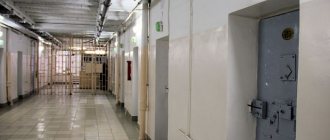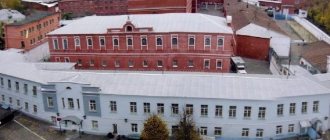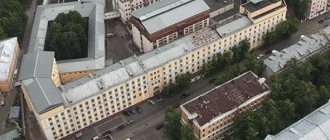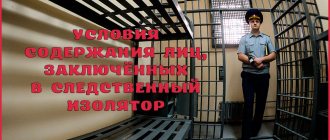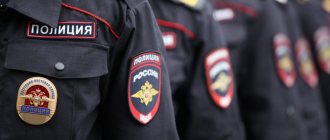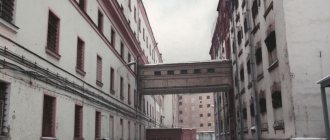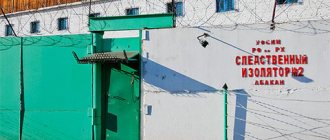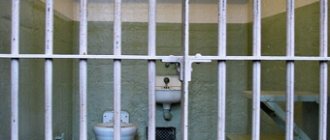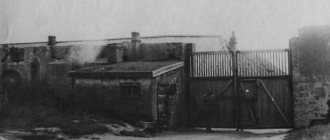St. Petersburg “Crosses” is one of the most famous and largest pre-trial detention centers in Russia. It bears the official name of FKU “SIZO-1” of the Federal Penitentiary Service of Russia for the city of St. Petersburg and the Leningrad region.
Built in 1892, the prison by the beginning of the 21st century had a number of problems related to overcrowding, lack of bedding and general dilapidation of the building. It was impossible to reconstruct the “Crosses” for two reasons: because of the law prohibiting the reconstruction of architectural monuments, which is the building of this institution, and because of the inability to transport prisoners anywhere during the renovation.
In 2006, a decision was made to build a new pre-trial detention center, and on December 22, 2021, all prisoners were taken to the new “Kresty” on the outskirts of Kolpino near St. Petersburg, where the institution remains to this day. This article is dedicated to the old legendary “Crosses”, partly thanks to which St. Petersburg is endowed with gangster fame. Let's consider why the prison is called that, what is the history of the founding of the pre-trial detention center, as well as which of the famous prisoners were imprisoned in this prison and other nuances.
What is it: characteristics of the old MLS in St. Petersburg
“Kresty” is a pre-trial detention center where suspects and accused of crimes are kept. They are not yet convicted, since the court has not yet pronounced a verdict against these persons. The only preventive measure in the form of detention was applied to them. Until the sentence passed by the judge comes into force, the person will remain in isolation and will not be transferred to another institution.
A pre-trial detention center is not a correctional institution; it is not intended to hold prisoners on a permanent basis. Serving a sentence in a pre-trial detention center is only possible if the sentence does not exceed six months.
Where is it located, the address of the pre-trial detention center: 195009, St. Petersburg, Arsenalnaya embankment, 7.
Telephone number of the duty station of this prison: 8 (812) 542-90-14.
The head of the institution is Colonel of the Internal Service Vadim Aleksandrovich Lvov. Reception of citizens on all issues is carried out every second and third Wednesday of the month from 11.00 to 12.00.
You must make an appointment in advance by calling 8 (812) 542-47-35. You can also ask questions to the management of the institution through the online reception https://www.kresty.ru/content/feedback/.
There is a Crosses page on the GUFSIN website – https://78.fsin.su/structure/sizo1.php. In addition, there is an official website of the institution https://www.kresty.ru/, groups on social networks https://vk.com/club2032202, https://vk.com/club1594317, https://vk.com/ kresty_spb.
Those held in a pre-trial detention center have the right to short-term visits (remember that long-term visits in a pre-trial detention center do not exist in principle), applications for which are filled out in the name of the head of the institution. The room's opening hours are from Monday to Saturday from 8.00-16.30 (lunch from 12.00-13.00).
Components of the Crosses-2 project
The main architectural feature of the complex is the main buildings in the shape of crosses placed on their sides (in the shape of the letter “x”). Such an unusual appearance is not the original idea of the architect. This is the best option for effectively guarding prisoners - there is a guard post in the middle of each side of the cross on each floor.
According to the plan, the entire ensemble will include a considerable list of objects:
- Two regime buildings.
- Administrative building.
- Main distribution point.
- Food block.
- Laundry.
- Camera block.
- Religious building - Orthodox Church.
- Production workshops.
- Dormitories for prisoners who will be employed in economic services.
- Medical unit.
- Collection and investigation corps.
- A number of walking areas: for prisoners on the upper floors - on the roof of the buildings, for prisoners on the lower floors - at the ends of the buildings.
- Gym for employees.
- Canteen for workers.
- A number of utility rooms: enclosures for service dogs, a fire station, warehouses, etc.
Photos of St. Petersburg Crosses outside and inside
In the following photo you can see what this MLS looks like:
“Crosses-2” in Kolpino: when will it open?
Today the condition of the grandiose insulator is not the best:
- One of the buildings has already experienced two floods due to defrosting of the heating system.
- Lost locks and keys to cameras. The subcontractor StroyTechInvest did not transfer them to the customer, although he received 12 million rubles for the work.
For the summer of 2021, the readiness of the facility was estimated at 90%. At the same time, the head of the Federal Penitentiary Service G. Kornienko announced an official statement that the pre-trial detention center will definitely be put into operation before the end of 2021.
Institution infrastructure
Why is the prison called “Crosses”? The pre-trial detention center consists of two cruciform five-story buildings , the second building has the same structure as the first. This is where the name of the prison “Kresty” came from. This form was not chosen by chance: at the intersection of two corridors there is a platform from which you can see everything that happens at all four ends and on all floors, with the exception of the fifth, basement. This form is convenient not only because it is visible, but also because it reduces the possibility of prisoners communicating with each other.
The stairwells are covered with metal mesh to protect defendants from accidental injury or intentional suicide. Between the buildings of the detention center there is an administrative building, on the top floor of which is the Church of St. Alexander Nevsky.
The territory also contains four hospital buildings, a laundry, an icehouse , a dormitory for guards, a boiler room with an electric generator, an infectious disease building, a bathhouse and a kitchen with a bakery.
The service personnel at Kresty are the prisoners themselves, who go on duty according to a specific schedule.
Why did “Crosses” get its name?
The Kresty prison is a complex of several rectangular buildings, which from a height form two huge crosses. And the architect Tomishko made such an interesting decision for a reason. He believed that prison should remind criminals of the cross on which the Savior was crucified: it was assumed that this would contribute to their repentance for their sins. The prison was originally designed to accommodate 1,150 people and had 960 cells. Obviously, for the most part, the cells were single: Tomishko decided that the place where the criminal would spend a huge amount of time should resemble a monastic cell, where it would be easier to beg forgiveness from God. “Crosses” is a prison, the architecture of which has the deepest meaning.
By the way, there is a legend that initially there were 961 cells. Tomishko himself was allegedly walled up in one of them: this was done so that no one could find out all the secrets of the largest prison in Europe.
Conditions of detention in the St. Petersburg pre-trial detention center
The isolation ward has 960 cells, each measuring 8 sq.m. Initially, during construction, they were planned to be single, but at the moment they contain 2-3 people. In the overcrowded nineties, the number of people in the cell reached 13. The cell contains two-tiered metal narrow bunks, a table, two chairs, and a shelf with personal belongings for each prisoner. Clothing and utensils are allowed “from the outside,” as well as books, personal items, and hygiene items.
The cell has a tap with running water and a toilet . Prisoners are provided with a bathhouse once a week, the duration of water procedures is 15 minutes. Maintaining cleanliness in the cell is the responsibility of the prisoners.
We invite you to watch a video about the conditions of detention in the pre-trial detention center:
Schedule
A prisoner's day begins at 6 a.m. and ends at 10 p.m. The ascent is signaled by the inclusion of bright lights and the radio. After this, it is forbidden to be on the bunk until lights out. Within an hour, prisoners make their beds, wash themselves, and tidy up their cells. Afterwards - breakfast and morning check.
At 9.30 the prisoners go on a walk, which takes place in a small room surrounded by concrete walls. There are bars and barbed wire above this room. Prisoners go out for walks in the same group as they are in their cells . During this time, their cells are subject to sanitization and inspection for storage of prohibited items.
At 12.00 – lunch, at 17.00 – dinner. During the day, prisoners can play board games, read books, write letters, which at the end of the day can be handed over to the prison guards to pass censorship, and engage in their hobbies. After lights out, the radio turns off, but the dim lighting remains.
Meals for prisoners
Prisoners in pre-trial detention centers are entitled to three hot meals a day . Porridge is served for breakfast, soup for lunch, and the second course is porridge again, but with the addition of meat. For dinner there is also porridge, but with fish or vegetables. Prisoners are allowed tea as a drink. For medical reasons, some prisoners are prescribed dietary nutrition, then chicken or beef, eggs and dairy products are added to their diet.
The food in the pre-trial detention center is very meager and monotonous, so food donations are welcome.
Work and study
Since the pre-trial detention center is a place of temporary detention for prisoners , the opportunity to work or study is not provided here. Although initially “Kresty” was a prison where all prisoners worked, in the 50s of the twentieth century it was completely self-sufficient due to the cardboard factory organized on the territory, and during the Great Patriotic War a number of samples of military equipment were developed here.
In 1964, there was a change of regime, and Kresty became an isolation ward, not a prison camp, so prisoners could no longer work here.
Religious issues
The attitude towards religion in “Crosses” is tolerant . Initially, during the construction of the prison, the Church of St. Alexander Nevsky was erected here, which became a club in Soviet times. But since the late 90s, work has been carried out to restore the church; in 2004, the altar and iconostasis were returned. Entrance here is always free for prisoners.
On holidays, services are held in the church; the pre-trial detention center is regularly visited by a priest who confesses and gives communion to the “parishioners.” The Bible and Gospel are freely available in the library, which are in great demand in the detention center.
Representatives of other faiths in the pre-trial detention center are also treated with understanding.
Entertainment and relaxation
In their free time, prisoners are allowed to play board games, which are sent in parcels and packages. The pre-trial detention center has a fairly large library, which is actively used. Employees note that books on religious topics and Russian classics are the most popular among prisoners.
Having free time also inspires prisoners to be creative. The most popular genres here are drawing (including icons), modeling from bread crumbs and crafts from paper and cardboard.
There is a club in “Kresty” where entertainment events are held for various holidays. The prisoners themselves act as decorators, artists and screenwriters here. In the same club, prisoners are sometimes shown various films.
Dates and visits
According to Article 89 of the Penal Code of the Russian Federation, prisoners can be granted no more than two visits per month, lasting up to three hours each. Visits are carried out under the control of guards and if there is an attempt to transfer prohibited items or information to the prisoner that may hinder the investigation or contribute to the commission of another crime, they are interrupted early.
To obtain permission to visit, you must write an application addressed to the head of the pre-trial detention center. In some cases, refusal is possible, most often this can happen due to the illness of the arrested person or in case of violation of the regime (or in an exceptional case when the investigation considers that your visit may interfere with the investigation).
Transfer of products and things
According to Art. 90 of the Penal Code of the Russian Federation, prisoners in pre-trial detention centers are allowed to receive any number of parcels, the weight of which must comply with the rules of mail, as well as transmission, with a total weight of no more than 30 kg per month. For prisoners suffering from serious illnesses (if there is a medical report from the institution’s doctors), there is no weight limit for parcels.
Items, substances and food products that may be dangerous to the life and health of people or used as weapons of crime are prohibited from being handed over to prisoners.
All types of alcoholic beverages , foods that require heat treatment, home-made canned food and perishable foods (dairy products, semi-finished products) are strictly prohibited for transfer.
All products must be factory produced with a stated expiration date.
It should also be remembered that all parcels and transfers undergo thorough inspection , so product packaging must be transparent, otherwise it will be opened. For example, some of the cigarettes will be broken, in case you hid something there.
Opening hours of the delivery bureau: from 8.00 to 17.00 (lunch from 12.00 to 13.00) daily, sanitary day is the last Sunday of each month.
If it is impossible to bring the package, then you can place an order at a local store , and then everything will be delivered directly to the cell, bypassing the inspection procedure, which is especially important for tobacco products. The order desk is open from Tuesday to Saturday from 8-30 to 16-30, lunch from 12-00 to 13-00.
The most relevant products for transfer are those that are a kind of currency in the pre-trial detention center: instant noodles, sugar, salt, and especially tea and cigarettes.
Among the things that are in great demand for donation at “Kresty” are: bed linen, towels, dishes and spoons (made of plastic or wood), underwear, tights, socks, personal hygiene products (soap, razors, toilet paper).
Punishment cell
For violation of the regime or disobedience to the staff of the pre-trial detention center, the prisoner is sent to the Penal Temporary Detention Isolator (SHIZO). In Kresti this is a room not exceeding 4 square meters, located in the basement, with a very small window near the ceiling. The prisoner is there alone, the bunks nailed to the wall are folded up for the daytime, time here has to be spent on your feet or on the damp and cold floor.
In addition, the daily ration in the punishment cell has been reduced. According to Article 118 of the Penal Code of the Russian Federation, the period of stay in a punishment cell should not exceed 15 days.
Construction and crime
Ironically, the murders and arrests of Kresty-2 in Kolpino were accompanied throughout the construction.
In March 2021, Nikolai Chernov, deputy construction supervisor, died from a number of bullet wounds. It is worth mentioning that a few days before, an attempt had already been made on his life. The culprit turned out to be none other than the curator Sergei Moiseenko himself. The reason for the contract killing was that his assistant had repeatedly recorded corruption and financial violations at the construction site, so his senior colleague decided to get rid of him in this “popular” way.
In August 2021, the investigation received new information: Moiseenko offered the general director of Petroinvest R. Khamkhokov, for an appropriate fee, to sign acts of acceptance of work that was not completed. According to investigators, the curator received 350 million rubles from the company. Khamkhokov was also detained.
General Director of GSK V. Kudrin did not distinguish himself either. In March 2021, he was charged with theft of 56.6 million rubles. Today the former general director is under house arrest.
Another strange fact was also revealed: unknown persons, posing as contractors for the construction of the road to the detention center, provided reports on the work allegedly done, for which they somehow received 12 million rubles from the budget.
Features of the prison regime
"Kresty" is one of the most famous places of detention in Russia . One of the distinctive features of this place of deprivation of liberty is that since the 90s of the twentieth century, “Crosses” was the most overcrowded prison on the territory of the Russian Federation. At times the number of prisoners reached 12 thousand people.
There were 13 prisoners in 3 bunk cells, and they were forced to take turns sleeping. The air temperature in the cells reached 40 degrees and rarely fell below 30, and the stench, sweat, and smoke were added to this. This contributed to the development of unsanitary conditions and disease, and made prison conditions particularly difficult.
Commissioning facts
According to initial plans, the move of the defendants to the new building was supposed to take place back in 2013. However, the first facilities of the detention center were accepted by the FSIN only in the fall of 2014. In February 2015, a new statement was given: the facility is 85% ready and will be put into operation in the fall of the same year. But in December 2015, despite the signing of an additional agreement for 1.3 billion rubles, the opening date was postponed again.
History from the foundation
Construction of the “Crosses” began in 1884 by order of Nicholas II under the leadership of the architect A. Tomishko. The unusual shape of the insulator was his idea. According to the master’s idea, this form should remind prisoners of God, or symbolize the cross placed on their own destiny.
Solitary confinement cells were supposed to resemble a cell and have an environment conducive to repentance, prayer and correction.
Soon after its opening, the prison received its name as we know it. The project turned out to be successful and convenient, so it was later repeated in Samara and Chelyabinsk.
At the beginning of the 20th century, “Crosses” was considered an exemplary prison , made in the European style. The cells contained 1-2 people. The buildings were equipped with the latest technology of the time. They had flush toilets, ventilation, and central heating.
Before the revolution, the pre-trial detention center became almost entirely an institution for holding political criminals, although before that it had predominantly a criminal element. The era of Stalin brought a new popular article - “Enemy of the People.”
During the Great Patriotic War, most of the convicts and prison staff died.
Almost every day the territory of “Crosses” was bombed. The hunger and cold of the blockade claimed many lives. After the end of the war, the destroyed buildings began to be restored; in the 60s, old ones were restored and new blocks and production facilities were built.
The most difficult years in the fate of “Kresty” were the 90s , when the isolation ward was overcrowded. During this period, tension among prisoners was particularly strong, resulting in constant clashes between prisoners. Such clashes often led to murders.
By the end of the 90s, conditions in the pre-trial detention center improved. In “Kresty” the bunks were changed and the bathrooms were improved. In 2004, the Church of St. Alexander Nevsky was restored, the altar and dome crosses were returned to it. Unfortunately, due to the design features of the buildings, they are not subject to major repairs. Any redevelopment will lead to the destruction of the building.
We invite you to watch a video about the history of the pre-trial detention center:
Project of new “Crosses”
Relocation of the pre-trial detention center "Kresty" from the building to the embankment. Arsenalnaya, 7, located in the center of the cultural capital, was conceived back in Soviet times. During perestroika, the idea was frozen due to lack of funding.
They returned to the project only at the beginning of the 2000s - then they planned to build a new insulator in the Parnassus area. However, the construction site did not meet a number of necessary parameters. As a result, we found our address “Crosses-2” in Kolpino, on the lands of a former state farm on the street. Kolpinskaya, 9. This is a huge plot of 28 hectares, located between the village of Metallstroy and the Kolpinskaya educational colony, far from the city itself, next to the cemetery.
In connection with the opening of the pre-trial detention center “Kresty-2” in Kolpino, it is planned to put into operation a new railway station. The fact that so far only railway tracks lead to the new insulator is his big problem. That’s why the second stage of the project after the grandiose construction will be the construction of an overpass across the railway tracks, as well as the reconstruction of Oboronnaya Street and Zavodsky Prospekt.
The most famous prisoners
Over the years of its existence, many famous people have visited the walls of “Crosses” . Before the revolution, the Bolsheviks A.V. Lunacharsky, V.A. managed to visit “Kresty”. Antonov-Ovseenko, L.D. Trotsky. The latter even took his pseudonym after the name of one of the local guards.
In the 1930s, victims of Stalinist repressions convicted under Article 58 served their sentences here: historian L. Gumilyov, Marshal K. Rokossovsky, actor G. Zhzhenov. Later, the list of “star” prisoners was supplemented by the writer D. Kharms and the poet I. Brodsky.
Court and case
Already in October 2021, the Federal Penitentiary Service began to suspect the contractor of receiving excess profits of 1.1 billion rubles. In December of the same year, GSK announced that it had gone bankrupt - the one that, according to the contract, was supposed to perform 50% of all work. And this subcontractor, who did not recognize such claims, filed a counterclaim against the general contractor GSK at the beginning of 2021. The company also accused the General Construction Corporation of bankruptcy.
Petroinvest claimed that GSK should have paid him 32 million rubles for the work carried out, but the funds were never transferred. The general contractor objected, saying that since the fall of 2015 he stopped accepting Petroinvest’s work and signing executive documents.
Escapes
Over the entire history of the “Crosses,” several escapes have been made from them . The first and only successful escape was made in 1922 by the robber Lenka Panteleev. With the assistance of one of the guards, he managed to break free.
The most prominent “fugitive” was the bandit Sergei Maduev, nicknamed “Chervonets,” in 1991. He managed to charm a female investigator, entered into a relationship with her, and his lover brought a pistol to his cell. Maduev took a hostage, wounded a major from the guard, but he himself was shot, and the release plan failed.
Having recovered from his injury, Chervonets still did not give up his idea and managed to convince one of the guards to give him his service weapon. He later justified himself by saying that he was under Maduev’s hypnosis. But this time the guards were very vigilant, and the escape was unsuccessful.
In 1992, according to the Maduev scenario, seven people already tried to escape from “Crosses” . Having taken two prison staff hostage, they demanded freedom. The special forces operation ended with the release of the hostages and the death of the three main initiators of the escape.
There were also comical cases of escape attempts, when prisoners forged prison employee IDs, dismantled the brickwork of the walls, etc., but all of them were unsuccessful.
Due to the fact that the death penalty is prohibited in Russia, the most terrible and dangerous criminals are placed in special regime colonies. On our online portal you will find information about such terrible Russian prisons as the White Swan, Black Dolphin, Snowflake, Polar Owl, Vologda Pyatak, Matrosskaya Tishina, Black Golden Eagle, Vladimir Central, Butyrskaya.
"Crosses-2": what they will be like
The pre-trial detention center “Kresty-2” in Kolpino, a photo of which you will see throughout the rest of the article, will become the largest in Europe. Designed for 4 thousand prisoners, it will be a multifunctional complex, where, in addition to the 8-story detention center, there will also be its own clinic and hospital, its own bakery, fire department, bath and laundry plant, a complex of warehouses, premises for sports, a church, workshops for those under investigation and a hotel complex for their visitors. And for the workers of the pre-trial detention center, two residential buildings will be equipped.
Regime cross buildings will be built 8 floors high. They will be equipped with a number of technical innovations, such as:
- Special elevators for transporting persons under investigation.
- Moving travel paths (like those common at airports) between buildings.
- Towers with guards will be replaced by an electronic system.
- Anti-vandal furniture and windows.
- For the first time in Russia, for such structures, the toilet premises will be enclosed by walls.
“Kresty-2” in Kolpino is a pre-trial detention center that will meet a set of international standards. First of all, there will be no overcrowding, so characteristic of Russian prisons. For one person under investigation - 7 m2 of living space. In the security buildings there will be 1-, 2-, 4-bed cells, rooms for temporary detention of accused and suspects, rooms for pacifying violent “guests”.
The design bureau also took care of the psychological state of those under investigation - the walls will be made in soothing pistachio, beige, and light green shades. But the Internet and mobile communications will definitely be banned here. Communication with the outside world is only in meeting rooms with transparent walls, equipped with telephones.
Mentions in popular culture
The songs of M. Krug, A. Rosenbaum, G. Pick, V. Nochny are dedicated to “Crosses”, some of them are dedicated to personal experience of being in a pre-trial detention center. Also, references to them are found in the poems of I. Brodsky, V. Zeest, A. Akhmatova, M. Shcherbakov.
The detention center appears in the fourth season of the television series “Cop Wars.” According to the plot, the hero of Alexander Ustyugov is serving a prison sentence in “Kresty”.
This same institution is given special attention in the documentary film by V. Mikeladze “The Last Bandit of the Soviet Union” from the series “Sentenced for Life.” In another documentary series, in “Criminal Russia”, the two-part issue “Escape from the Crosses” is dedicated to the detention center .
The era of the old “Crosses” as a prison is over. The fate of the historical building on the Arsenalnaya embankment in St. Petersburg was not decided for a long time. By the end of 2021, it was decided to turn it into a museum of the Kresty prison, which will be dedicated to the history of the institution, its prisoners and their creativity. Entry will be free for everyone.
Project implementers
“Crosses-2” in Kolpino is a project of the Specialized Design and Survey Institute (SPII), created back in 2007 by order of the Federal Penitentiary Service (FSIN) for St. Petersburg and the Leningrad Region. This organization has been specializing in projects of departmental institutions for more than 70 years. She developed both the external architectural appearance and the internal layout of the entire series of premises.
Also in 2007, a competition was opened for the construction of the largest Russian detention center with 4,000 beds - the Kresty-2 prison in Kolpino. Of the 7 participants, General Construction Corporation PJSC was chosen as the winner.
On July 14, 2007, government contract No. 130 was concluded with this company for a total amount of 11,907 million rubles, excluding the costs of drawing up working documents, designer’s supervision, and carrying out a complex of utility networks. The project was to be completed by December 1, 2015.
Colonel S. Moiseenko, deputy head of the capital construction division of the Federal Penitentiary Service for St. Petersburg and the Leningrad Region, was appointed supervisor of the construction. Lieutenant Colonel N. Chernov was chosen as his assistant.
